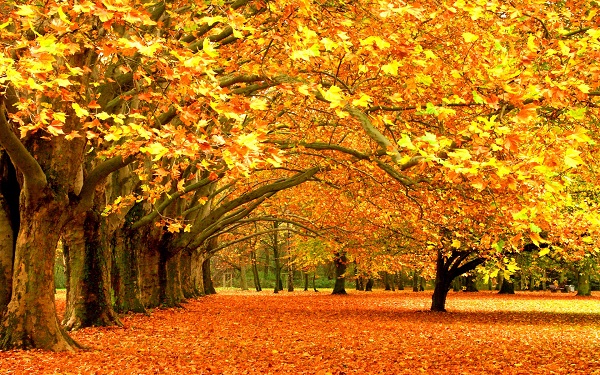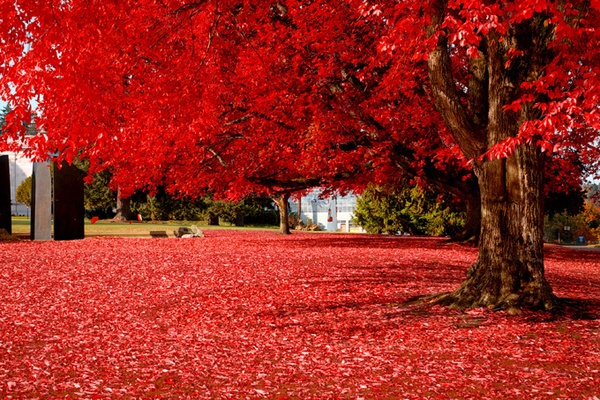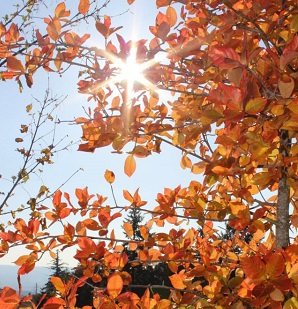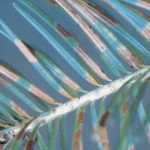Why Do Leaves Change Color In The Fall?
What makes a tree’s leaves change from green to yellow, orange, and red is actually always present in the leaf. It just happens to be the shorter days and cooler nights that allow the brilliant colors of autumn to shine through.
During the growing season (Spring and Summer) chlorophyll is abundant in a tree’s leaves. It supports photosynthesis and gives the leaves their characteristic green color. Sunlight deteriorates the chlorophyll every day, but while the tree is growing, it is constantly replenished and continues to dominate the leaf’s pigment.
As the nights gradually lengthen and cool, trees seal off their leaves to prepare for winter when it will be too dark and too cold to support growth. A barrier is formed between branches and leaf stems, blocking the flow of nutrients into the leaf. This stops the leaf from making new chlorophyll and as the sunlight decomposes what’s left, the green color fades. With chlorophyll out of the way, other pigments are now free to take over.
Yellows
Some tree species have carotenoids, giving leaves a yellow or orange hue. Carotenoids are so abundant in certain tree leaves that they can sometimes compete with chlorophyll, which is why you might see yellowish-green leaves during the growing season, and why yellow leaves are often the first to show in the fall. Hardwood species such as ash, alder, birch, cottonwood, and maple will have leaves with a yellow or orange tint. This pigment is also what gives carrots, corn, bananas, egg yolks and many other things in nature their vibrant color.
Reds
Anthocyanin pigments are responsible for a leaf’s red color, and are developed by sunlight. Sometimes you can spot it in the Spring on buds and the edges of new leaves, but it really stands out in Autumn on the broad leaves of maple, oak, and dogwood trees. They can combine with carotenoids, making the deep orange and bronze colors we often see in hardwood species. You can also see anthocyanin pigments in red apples, strawberries, plums and cranberries.
Does The Weather Make A Difference?
The color and brightness of a tree’s leaves can actually depend on the weather. According to the U.S. National Arboretum, weather conditions can affect fall foliage during each season and stage of the growing process.
A wet Spring is ideal (no problem here). Drought conditions early on in the growing season can cause a tree to seal off its leaves too soon, and they will drop before they’ve had a chance to develop their fall coloring.
In the Summer and early Fall, too much moisture can actually mute colors. It’s the kind of fall seasons we love— sunny days and cool nights— that will bring about the brightest leaves. Lots of sun will cause chlorophyll to decompose more rapidly, allowing yellows and oranges to be revealed sooner and boosting the formation of more anthocyanins. The fact that red pigments depend on sunshine is why you might see more red leaves on trees (or parts of trees) that get a lot of sun exposure.







